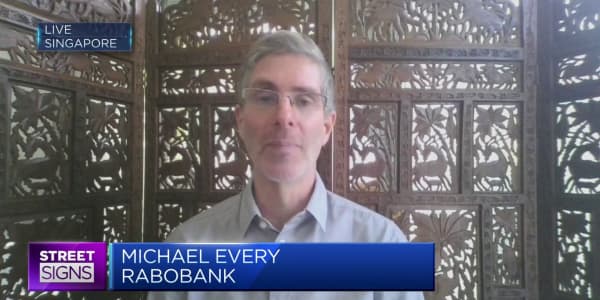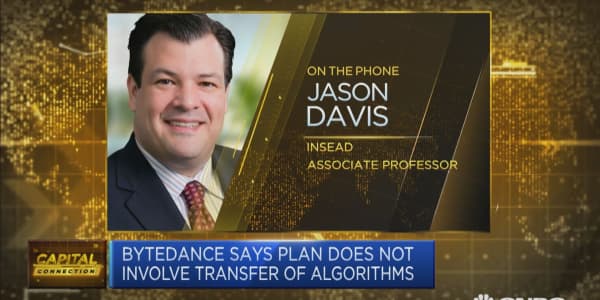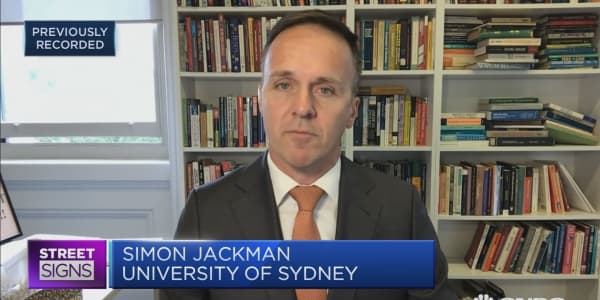If Donald Trump plans on enacting his aggressive domestic spending agenda, there's one tough group he'll have to get through first. And it's not Democrats or Republicans.
The so-called bond vigilantes, who have been missing from the market for the better part of a generation, could be making a return appearance soon. They last stepped in to make former president Bill Clinton tone down his spending agenda in the early 1990s, and they look to be making a return appearance as the new chief executive gets set to implement aggressive fiscal programs.

"Well, we've now got fiscal policy again and in spades, suggesting ... that bond investors are once again important," Christopher Whalen, senior managing director at Kroll Bond Rating Agency, said in a note to clients this week. "More, the prospect of higher interest rates and inflation could even herald the return of the bond vigilantes."
The term specifically refers to bond investors who sell their holdings in an effort to enforce fiscal discipline. Fewer buyers drive prices down — and drive yields up — in the fixed income market. That in turn makes it more expensive for the government to borrow and spend.
Talk about pressure in the bond market has heated up as government yields spiked to 2016 highs this week. The benchmark 10-year yield has jumped 38 basis points since Election Day (as of early-afternoon trading), and the 30-year bond yield has surged 34 basis points.
Trump's economic vision calls for sharp tax cuts for businesses and individuals and upwards of $1 trillion in spending to rebuild roads, bridges and other parts of America's crumbling infrastructure. Doing so likely would result in higher debt and budget deficits, though the president-elect insists that increased economic growth will pay for his plans.
The bond market, though, is girding for an inflationary environment, making conditions ripe for a reappearance by the bond vigilantes.
When you have inflation and growth, or the prospect for more growth, that slams slack into a bond bubble, it's a very dangerous cocktailMichael Pentofounder, Pento Portfolio Strategies
"It's just a nice, elegant way of saying the markets matter again," Whalen said in an interview Tuesday. "The bond market's been in an induced coma. The central banks forced yields down and kind of put their foot on everybody's neck."
"Now what you've seen is that because of Trump, and because of his stated fiscal agenda, suddenly the market has said, 'Wait a minute,' and we've seen rates back up considerably, and I think they're going to continue to do so."
Fiscal stimulus has been in short supply since President Barack Obama's $787 billion stimulus in 2009. Bond yields have stayed in check through most of his term.
Indeed, the Federal Reserve has kept its short-term rate target anchored for the past eight years, raising just once — a quarter-point increase in December 2015 — and perhaps once more next month. The Fed had been an aggressive buyer in the Treasury market, ballooning its balance sheet to $4.5 trillion in three rounds of quantitative easing.
In the meantime, investors continue to fret over a bond bull market that has been ongoing for more than three decades. Each predicted end of the fixed income rally has been wrong. But Trump's plans for aggressive fiscal policy, the likes of which hasn't been since before the Great Recession, have renewed fears.
"When you have inflation and growth, or the prospect for more growth, that slams smack into a bond bubble, it's a very dangerous cocktail," said Michael Pento, head of Pento Portfolio Strategies.
Pento worries that the combination of market factors could stop the president-elect before he gets started.
"There's a lot of bad stuff that's already occurred," he said. "If you put them on a ledger, on the good side there's hoped-for growth policies in 2017. On the bad side, you already have a spiking dollar, spiking interest rates. The chances are elevated that Trump starts his presidency off with a recession."
A fight with the Fed
However, if the bond vigilantes do swoop in, they could find themselves with a formidable opponent, namely the Fed and other central banks, which could adopt a whatever-it-takes approach to keeping yields in check and thwarting an economic downturn.
The Fed has been at the global forefront for ambitious and unconventional monetary policies, but the Bank of Japan's recent move to target its 10-year note yield at zero took the game to a new level. Should troubles erupt in the bond market, more action would be likely by the Fed.
"Consider a scenario where a large fiscal stimulus (or the expectation of such stimulus) pushes up bond yields so sharply that risk assets and the economy suffer," Joachim Fels, global economic adviser at bond giant Pimco, said in a note Tuesday. "To prevent a bond tantrum, the central bank may want to limit the rise in yields by intervening in the bond market directly. The cleanest way to do this is to announce a cap on yields and stand ready to buy unlimited amounts to preserve the cap if needed."
That would be over the long term, though. In a shorter time frame, Kroll's Whalen said he thinks a recent prediction by Jeff Gundlach at DoubleLine that the U.S. 10-year yield could hit 6 percent in five years is "conservative."
"I think we could see that next year, simply because there's so much suppressed demand," Whalen said. "You can't underestimate the dramatic change in expectations that's occurred. ... It will be hard for him to get done what he wants to get done. However, it's just a really dramatic change from the punitive environment of low growth and over-regulation that we've had."





